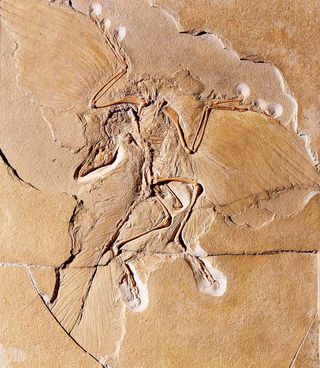Page 24 of “The Origin of Life” cites Henry Gee:
A second, more serious challenge is the lack of proof that those creatures are somehow related. Specimens placed in the series are often separated by what researchers estimate to be millions of years. Regarding the time spans that separate many of these fossils, zoologist Henry Gee says: “The intervals of time that separate the fossils are so huge that we cannot say anything definite about their possible connection through ancestry and descent.” (Brochure’s footnote: Henry Gee does not suggest that the theory of evolution is wrong. His comments are made to show the limits of what can be learned from the fossil record.) – In Search of Deep Time—Beyond the Fossil Record to a New History of Life, by Henry Gee, 1999, p. 23.
======
The following is the immediate context of the passage.
======
It has been a productive week. Nzube, Gabriel, Robert, and others on the team have unearthed hominid remains—no complete skulls or skeletons, because these are rare indeed, but evidence enough that could, after study, reveal something about the hominids that had lived in this region 3.3 million years ago.
In all, it has taken approximately 250 man-hours of work to produce enough hominid fragments to half-fill a tin box that Meave carries around on the passenger seat of her truck. Almost all the specimens were pieces of tooth. It does not sound like much, given all that effort, but it is more than most fossil hunters expect, even from a site that had already yielded a few hominid bones and had earlier been marked as promising.
Before I told everyone else about my own find, straddled on that ridge overlooking an expanse of space and, figuratively, an expanse of time, I wondered fleetingly if it might have been part of a hominid—perhaps half a tooth, like the one Gabriel found. In my mind I was already holding the fragment between finger and thumb, turning it over in the light. The question immediately presented itself: could this fossil have belonged to a creature that was my direct ancestor?
It is possible, of course, that the fossil really did belong to my lineal ancestor. Everybody has an ancestry, after all. Given what the Leakeys and others have found in East Africa, there is good reason to suspect that hominids lived in the Rift before they lived anywhere else in the world, so all modern humans must derive their ancestry, ultimately, from this spot, or somewhere near it.
It is therefore reasonable to suppose that we should all be able to trace our ancestries, in a general way, to creatures that lived in the Rift between roughly 5 and 3 million years ago. So much is true, but it is impossible to know, for certain, that the fossil I hold in my hand is my lineal ancestor. Even if it really was my ancestor, I could never know this unless every generation between the fossil and me had preserved some record of its existence and its pedigree. The fossil itself is not accompanied by a helpful label.
The truth is that my own particular ancestry—or yours—may never be recovered from the fossil record. The obstacle to this certain knowledge about lineal ancestry lies in the extreme sparseness of the fossil record. As noted above, if my mystery skull belonged to an extinct giant civet, Pseudocivetta ingens, it would be the oldest known record of this species by a million years. This means that no fossils have been found that record the existence of this species for that entire time; and yet the giant civets must have been there all along. Depending on how old giant civets had to be before they could breed (something else we can never establish, because giant civets no longer exist so that we can watch their behaviour), perhaps a hundred thousand generations lived and died between the fossil found by me at site LO5 and the next oldest specimen.
In addition, we cannot know if the fossil found at LO5 was the lineal ancestor of the specimens found at Olduvai Gorge or Koobi Fora. It might have been, but we can never know this for certain. The intervals of time that separate the fossils are so huge that we cannot say anything definite about their possible connection through ancestry and descent. (Gee, pages 22-23; underlining added)
